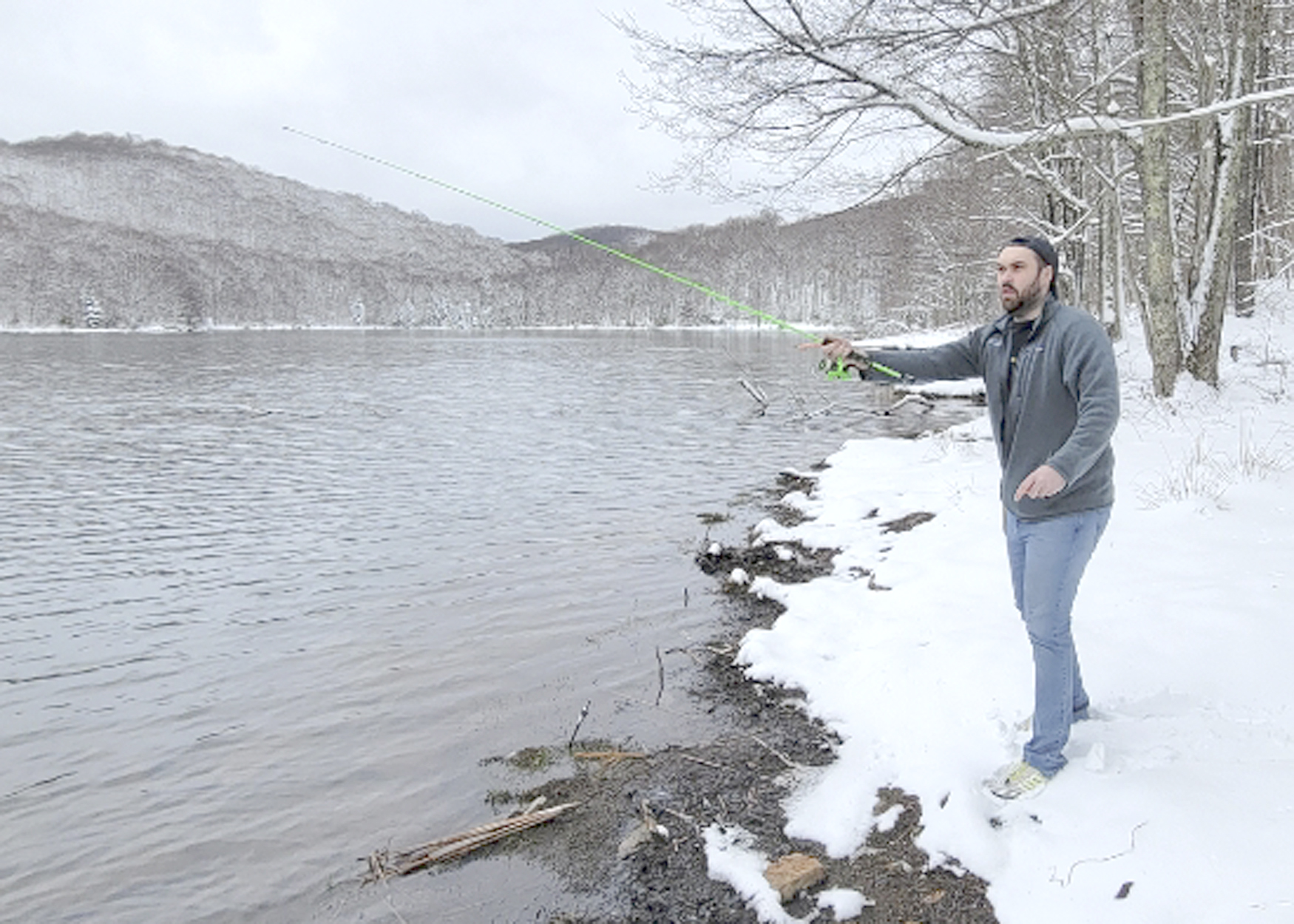
By Allen Hamrick
Ever since January 24, 1848, people have flocked to streams in search of gold. Hundreds of thousands went to California to get rich. Most of them did not succeed, and for good reason; gold was tough to find, required a strong back and a ton of luck. Here in the great state of West Virginia, we have our own gold rush that happened many years ago during the West Virginia Centennial of 1963. Back in 1955, Vince Evans was the first West Virginian to spot a small nugget in the Petersburg Trout hatchery. A nugget in a fish hatchery? Yep, you guessed it – West Virginia’s first gold nugget, and those ever since – trout. The little bug eyed fingerling was the grandma to all golden rainbow trout currently in this state.

Little Camouflage was her name, and she was given a place all her own in a pond all for her. A special eye was put on Little C, and she soon grew to a whopping 14 inches. West Virginia biologists decided that the opportunity to bring the cauldron out of the closet and whip up a new breed of fish was just too tempting. Little C birthed 900 eggs in 1956 and had quite the family. The lucky male fish to help with the process was a run of the mill rainbow trout. The hatcheries were a little bummed when they noticed that none of Little C’s fingerlings were the same color as their mama. However, like most individuals, trout never show their true colors until they get older. It took a few months, but around 300 of Little C’s fingerlings started to turn yellow and then gold, sparkling in the water like a half pound nugget.
The biologists continued their Frankenstein work in 1957 with spawning experiments to get the golden rainbow trout we know and love today. With Little C now probably in the great pond above, her many “grandtrout” were now fully popping out a beautiful golden color. West Virginia biologists of that day knew they had something special that was exclusive to this state. Within a few years and a few more Frankenstein experiments, the West Virginia Golden Rainbow trout grew to be just as big and just as wild as the regular rainbows.

In 1963, West Virginia’s Centennial, it was time to show the people of our state and beyond the new fish spawned only in the hatcheries of the mountain state. The biologists were as proud as a mama bear and her new brood of cubs as they introduced the “new” fish to the stocking schedule. In honor of the Centennial, some of the fish were given yellow tags and some orange which could land you a prize. In 2024, fish hatcheries now produce around 80,000 eggs every year, and no other state is given the opportunity to produce the fish. So, for West Virginia people, the Golden Rainbow Trout is our fish. What the biologists didn’t do was give anybody who slings a line at trout, the secret to catching them.
Hence, the search for gold began and continues today as anglers line the banks and gear up boats and kayaks. Sixty eight lakes and streams in West Virginia were stocked with 50,000 of Little C’s generations this year, and on April 1, 2024, lines began to be cast. Five hundred of the fish are tagged, so if you are one of the lucky 500, you will have the chance to win prizes. The event is big and brings in people from all over the country to come and take the golden challenge. The event ends on April 13, 2024, but don’t worry, they are still out there.
Fishing brings into perspective the things that matter most – all of the sounds, the peace, the chance to get away from it all is luring enough without the gold, but a gold dancing at the end of your line… trust me, nothing else will matter at that time. Catching the golden is a battle of wills, patience, and skill. As one old fisherman said, “Sure, it takes skill, sure, it takes patience, sure, those fish are hard headed and a thorn in my side, but here’s the secret to catching them… tie you on a good #18 hook real tight, put a tin split shot ‘bout 12 inches up your line, reach into your tackle box and pull out a 100 percent luck; you’ll catch ’em then.”
A few tips on catching the golds will help but are in no way a guarantee. One trick is to small everything down, from line to hooks to bait; golds are an edgy, easily spooked fish. It does not take much for them to bolt away from a situation. They are also easily agitated; if they want to spend time in an area, they will often strike bait that is continually shook in their face. They are more apt to bite early in the day or late evening, and don’t leave to go after golden trout wearing the latest in highly visible fashion. Instead, don your camouflage or dark clothing and blend in with the riverside as much as you can. You might already have a favorite style of rigging, but if not, some of my favorite is to set the bait up as a floating presentation with a two or three foot leader and an egg sinker. This works well in deeper pools of water. Most of the time, baits are presented with round bobbers or slip float bobbers. Slip float bobbers are the preferred for trout, especially the unweighted ones. They have little to no splash in the water, will ride the current better and you can adjust your bait to the depth you want with little motion in still water.
There are many tried and true methods for catching trout. The main thing is to get out and give it a whirl; West Virginia waters are just waiting to be fished. The 2024 West Virginia Gold Rush will go on through Saturday, so don’t miss out on the chance to become a West Virginia prospector. Go for the gold and set your place in history. Above all, don’t forget to thank Little C; without her none of this would happen. Keep a tight line!

